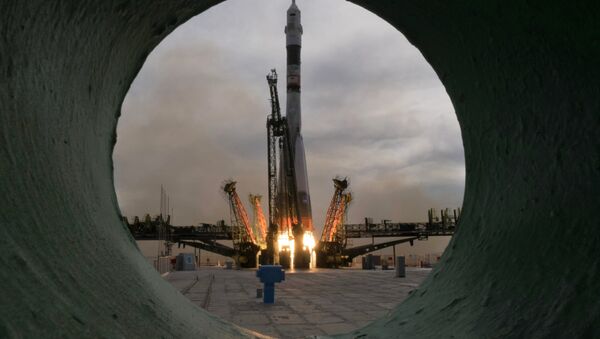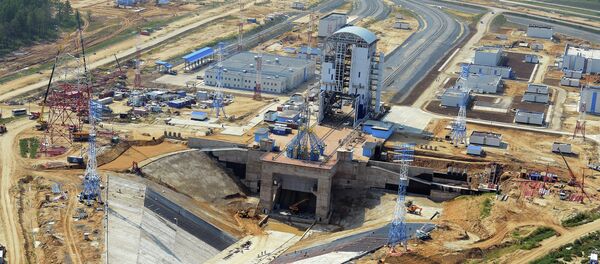“At this stage, the spacecraft is undergoing all the technical examination before being sent to the launch pad. A little over half a year is left before its first take off,” said Aleksandr Gordyaev, the head of the sector of the Soyuz project department of Energia that oversees the spacecraft.

The engineers are testing the wielding of approaching and orientation thrusters, pressure leaks and hundreds of butt joints.
The outward appearance of the Soyuz hasn’t changed much since it was first launched in November 1966. However, the interior has been constantly re-equipped with modernized avionics.
The Soyuz is not reuseable; a new one is built for each flight and is docked to the ISS. The old one is piloted by the crew returning to Earth; the central crew cabin separates from the other two compartments (these burn up in the atmosphere), and makes a ballistic re-entry, parachutes deploying to slow it down before touchdown on Earth.
The development of the previous manned version, the Soyuz TMA-M, which is now on a mission to the International Space Station (ISS), was primarily aimed at upgrading its digital computer and telemetry transmission system.
Earlier Soyuz craft were fitted with an analog telemetry system. The new solution is more compact, and has an advanced TsVM-101-class computer.
The modernization saw the replacement of the original 36 obsolete instruments with 19 newly designed ones, necessitating corresponding updates to the on-board control system and thermal control system.

The new craft is easier to manufacture, and its total empty weight is 70 kg less than that of the predecessor.
The Soyuz TMA-MS will be equipped with more efficient solar panels featuring photovoltaic converters. The docking and attitude control thrusters would be rearranged for reliably linking the ship to the ISS even if one of the thrusters failed, and safely return to Earth if two thrusters failed.
Unlike previous versions of the craft, the Soyuz-MS will be equipped with a GLONASS/ GPS satellite navigation system, an advanced control radio link with a satellite communication channel, and the Kurs NA automated docking system, which is two times lighter than the previous one and consumes three times less power.
It will provide the crew with uninterrupted updates on the trajectory parameters without relying on ground tracking equipment. The communications system will utilize Luch relay satellites for constant direct contact with ground control.
GLONASS/GPS receivers will be able to send exact coordinates to Mission Control via the Kospas/Sarsat system after parachute deployment and after touchdown, allowing teams on the ground to find the crew much faster.
The modernization program makes Soyuz, which is currently the main mean of transporting crews to and from the ISS, more reliable and safe to operate, improves structural commonality, and replaces obsolete equipment and components.






